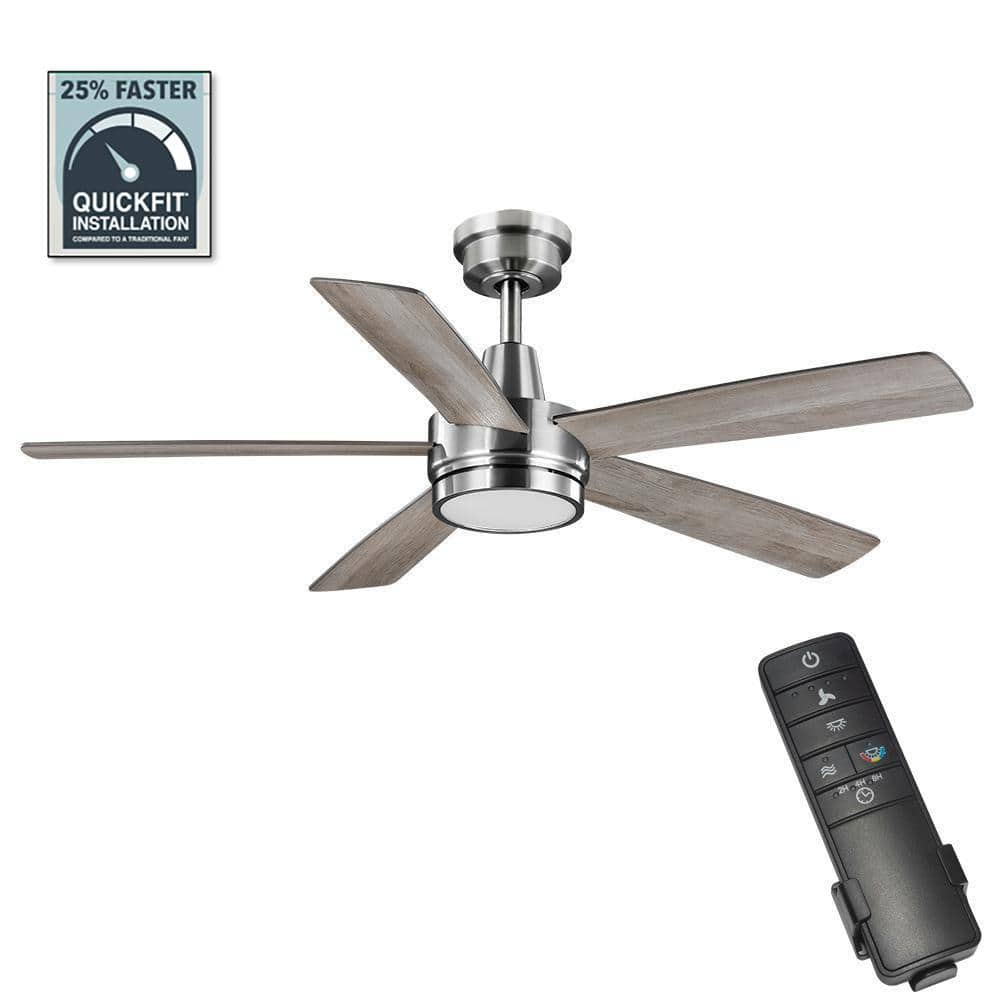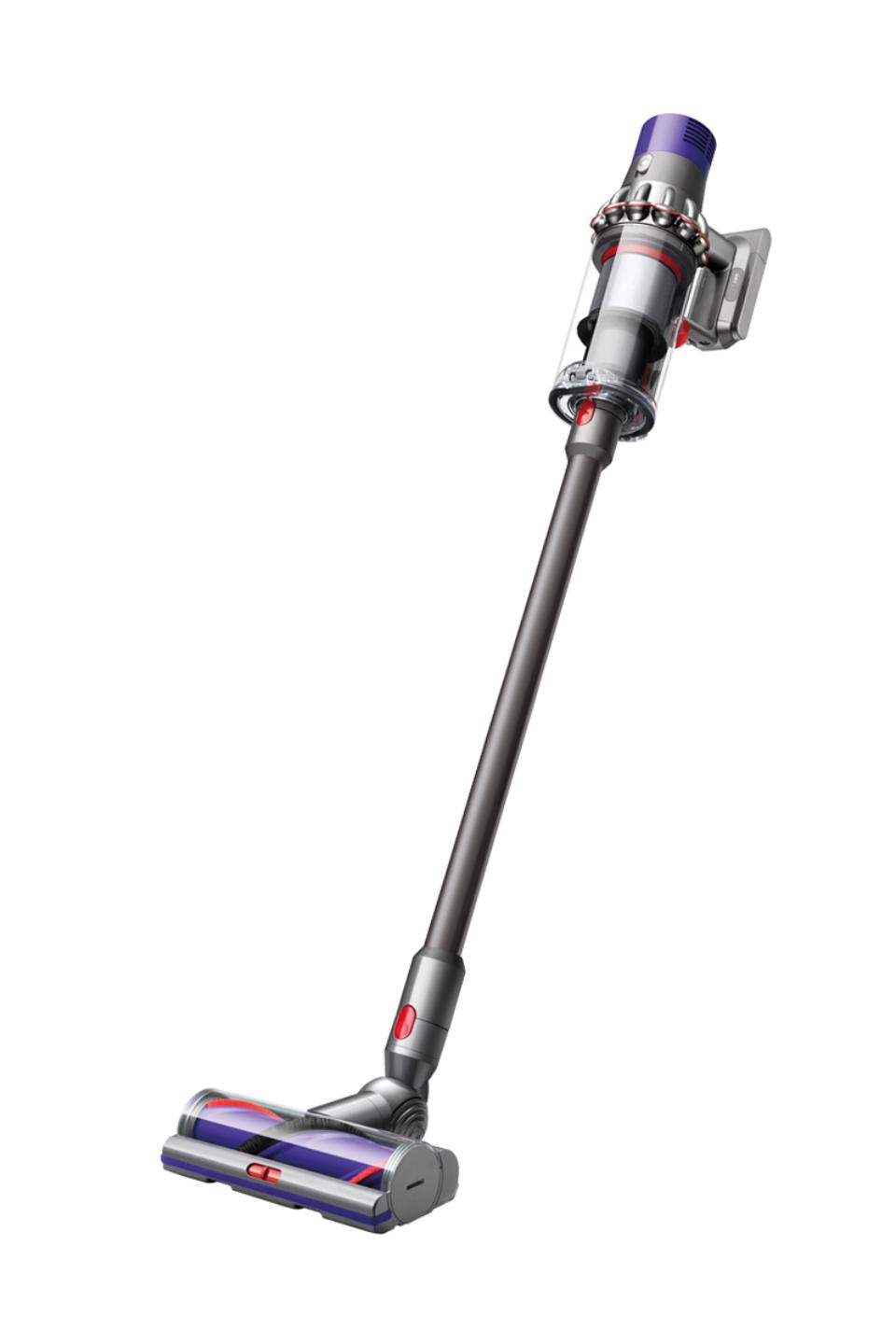Hampton Bay Fanelee 54 in. White Color Changing LED Brushed Nickel Smart Ceiling Fan with Light Kit and Remote Powered by Hubspace
Wireless control with Hubspace App, Google and Alexa. Maintenance-free integrated LED, no bulbs to replace. Choose from 6 color temperatures for the perfect shade of light.
The 54 in. Fanelee Smart Ceiling Fan from Hampton Bay is the perfect way to add a ceiling fan to your smart home ecosystem. This fan offers a variety of control options: remote control (included), control via your smart device (phone or tablet) with the HubSpace App, or voice control with Alexa or Google Assistant. The integrated 31-Watt LED offers ample lighting and the ability to choose from 6 different light temperature settings ranging from 2700K to 6500K. The beautiful brushed nickel finish is complemented with a frosted shatter resistant plastic shade that mimics frosted glass with the added benefit of not breaking if dropped during cleaning. Designed for indoor use in large rooms, the Fanelee features a quiet, yet powerful, 4-speed reversible motor for year-round comfort.
- Manage device with Hubspace, Google and Alexa; No Hub required
- Wireless control with your smart device, phone or remote control
- Smart ceiling fan compatible with Alexa and Google Assistant with no hubs or extra equipment necessary
- Control the fan with the included remote control, voice control, or free HubSpace app on your smart device (phone/tablet)
- HubSpace App and voice control allows control for fan speed, light control (on/off/dimming/color temperature), scheduling and timers
- Integrated, dimmable 31-Watt LED light allows you to choose from 6 different light temperature settings
- Light temperature options: 2700K, 3000K, 3500K, 4000K, 5000K, 6500K
- Dual mount installation (standard flat ceiling or angled mount) – Compatible with 3/4in Dia threaded extension downrods up to 48in in length (sold separately)
- Brushed nickel finish with 5 reversible blades in graywashed oak and dark oak finishes
- Frosted shatter resistant plastic shade that mimics frosted glass
- QuickFit Installation – installs 25% faster compared to traditional fans; Slide-on mounting bracket, twist and lock light shade
- Hand-held remote controls fan speed, light (on/off/dimming/color temperature), and comfort breeze mode (quick connect receiver plug for easy installation and wall cradle included)
- Quiet 4-speed reversible motor for year-round comfort
- Fan will operate as a standard remote control fan without Wi-Fi and Alexa or Google devices
Additional information
| Dimensions | H 15.90 in, W 54.00 in, D 54.00 in |
|---|---|
| Downrod Length (in.) | 6 |
| Fan Blade Length (In.) | 23.9 |
| Fan Blade Span (in.) | 54 |
| Fan Blade Width (In.) | 5.9 |
| Certifications and Listings | FCC Listed, FCC Listed, UL Listed |
| Manufacturer Warranty | Lifetime Motor Warranty |






by Cristian
I love this thing! It was easy to install and it works very well. With the Hubb Space app I can turn the light and/or fan on, change the color of the light (we chose a light that only has white colors, but they range from warm to cool and it’s nice to have choices) and/or dim the light. The fan moves a lot of air, has 3 settings and all are quiet. I highly recommend.
by Srini
We bought 2 of this models and they are awesome. They are much faster then couple of brands we used.
by Ruth
I really love the smart function more than I thought I would. You can have Alexa turn the fan off and on, higher and lower. I am not a fan of having another remote control to lose around the house, but having Alexa control it just by my voice is great!
by Brat
Great fan for my livingroom.
by Nola
Comfort setting randomly changes speed to simulate a true breeze.